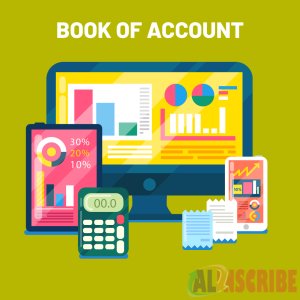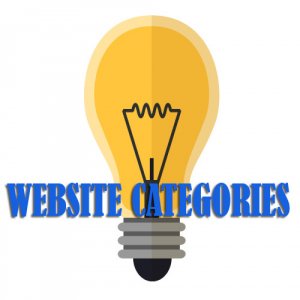Everything You Need To Know About Microsoft Dynamics 365 And Its Comparison With Tactic ERP & CRM
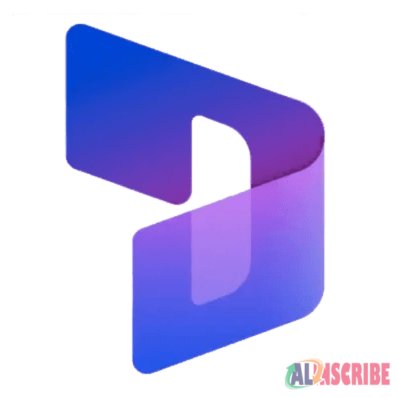
In today's dynamic business environment, choosing the optimal enterprise resource planning (ERP) and customer relationship management (CRM) software is paramount for operational efficiency and sustainable growth. Organizations consistently seek robust solutions capable of streamlining processes, enhancing customer engagement, and providing invaluable insights. This article comprehensively explores a guide on Microsoft Dynamics 365 and its comparison with Tactic ERP & CRM, one leading and one rising place-holder in the market.
We will delve into the extensive capabilities of Microsoft Dynamics 365, a suite of intelligent business applications renowned for its seamless integration within the Microsoft ecosystem and its powerful AI-driven analytics. Concurrently, we will examine Tactic ERP & CRM, an all-in-one cloud-based solution that has garnered recognition for its profound modularity and adaptability. By dissecting their core functionalities, identifying their distinct strengths, and outlining their ideal use cases, this detailed comparison aims to empower businesses with the essential knowledge to make a well-informed decision tailored to their specific operational requirements.
What is Dynamics 365?
Microsoft Dynamics 365 is a cloud-based suite of intelligent business applications designed to help organizations manage their entire operations. It unifies traditional Enterprise Resource Planning (ERP) functions like finance, supply chain, and operations with Customer Relationship Management (CRM) capabilities such as sales, marketing, and customer service.
Unlike separate software solutions, Dynamics 365 offers a comprehensive, integrated platform where data flows seamlessly between departments. This provides a holistic view of the business, enabling better decision-making and increased efficiency. Leveraging AI and machine learning, it offers predictive insights and automation, further enhancing productivity. Its deep integration with other Microsoft products like Office 365 and Power BI creates a familiar and powerful ecosystem, making it a scalable and flexible solution for businesses of all sizes.

What are the most advanced features of Dynamics 365?
Microsoft Dynamics 365 stands as a leading suite of intelligent business applications, continuously evolving to meet the complex demands of modern enterprises. Beyond its core CRM and ERP functionalities, Dynamics 365 distinguishes itself through advanced features that leverage cutting-edge technologies. These innovations aim to provide deeper insights, enhance operational efficiency, and drive superior customer experiences. From the pervasive integration of AI and machine learning to sophisticated predictive analytics and immersive mixed reality capabilities, Dynamics 365 is designed to transform how businesses operate, empowering them to make data-driven decisions and adapt swiftly in a dynamic global landscape.
1. Unified ERP and CRM Capabilities
Microsoft Dynamics 365 stands out by seamlessly merging ERP and CRM functionalities into a single, cohesive platform. This integration eliminates the common issue of data silos that often plague businesses using disparate systems for front-office (sales, marketing, customer service) and back-office (finance, operations, supply chain) functions. By providing a unified view of all business processes and customer interactions, Dynamics 365 empowers organizations to achieve a holistic understanding of their operations. This leads to improved communication across departments, more accurate data for decision-making, and a streamlined workflow that enhances overall efficiency and responsiveness to market demands. Businesses gain a comprehensive 360-degree view of their customers and operations.
2. Financial Management
The financial management capabilities within Dynamics 365 provide a robust suite of tools for maintaining impeccable fiscal health. It encompasses essential functions like general ledger management, accounts payable and receivable, budgeting, forecasting, and comprehensive financial reporting. This feature offers real-time visibility into an organization's financial performance, enabling businesses to track cash flow, manage expenses, and identify trends proactively. Automation of repetitive financial tasks, such as journal entries and reconciliations, reduces manual effort and minimizes errors. With support for multiple currencies, legal entities, and compliance standards, Dynamics 365 Finance empowers businesses to make sound financial decisions, optimize resource allocation, and ensure regulatory adherence, whether operating locally or globally.
3. Sales Automation
Dynamics 365 Sales is designed to empower sales teams, transforming their ability to acquire, nurture, and convert leads into loyal customers. It provides comprehensive tools for managing the entire sales cycle, from initial lead capture and qualification to opportunity tracking, quotation generation, and sales order processing. Features like automated lead scoring help sales professionals prioritize high-potential prospects, while intuitive dashboards offer real-time insights into sales pipeline health and performance. By automating routine administrative tasks and providing a centralized repository for customer data and interactions, Dynamics 365 Sales allows sales teams to focus more on building meaningful relationships, personalizing customer experiences, and ultimately, closing more deals faster.
4. Customer Service
The Customer Service module in Dynamics 365 is dedicated to helping businesses deliver exceptional customer experiences, fostering loyalty and satisfaction. It provides agents with a unified view of customer interactions across various channels, including phone, email, chat, and social media. Key functionalities include efficient case management, enabling quick resolution of customer inquiries, and a comprehensive knowledge base for self-service options. Agents benefit from AI-powered suggestions and insights that help them provide accurate and personalized support. The module also supports service scheduling and field service management, ensuring proactive and timely issue resolution. By streamlining customer service operations, businesses can reduce response times, improve agent productivity, and build stronger customer relationships.
5. Marketing Automation
Dynamics 365 Marketing is a powerful tool for businesses looking to enhance their marketing efforts and drive more qualified leads. It enables the creation and management of multi-channel marketing campaigns, from email marketing and social media engagement to event management. A core strength lies in its ability to personalize customer journeys, ensuring that relevant content and offers are delivered at the right time. The module provides advanced segmentation capabilities to target specific audiences effectively and offers lead scoring to identify the most promising prospects. Integration with sales modules ensures seamless lead handover and a unified view of the customer journey. By automating marketing tasks and providing detailed analytics, it helps optimize campaign performance and maximize marketing ROI.
6. Supply Chain Management
Dynamics 365 Supply Chain Management provides end-to-end capabilities to optimize all facets of a business's supply chain. From meticulous procurement and strategic vendor management to efficient inventory control, warehousing, and streamlined logistics, this feature helps organizations build resilient and agile supply chains. It offers real-time visibility into inventory levels, production processes, and order fulfilment, enabling proactive decision-making to minimize disruptions and costs. Features like demand forecasting and master planning ensure optimal resource utilization and on-time delivery. By automating and integrating various supply chain processes, businesses can enhance operational efficiency, improve product quality, and achieve greater profitability by responding swiftly to market changes.
7. AI-driven Insights and Analytics
Leveraging Microsoft's advanced Artificial Intelligence (AI) and machine learning capabilities, Dynamics 365 provides powerful, actionable insights and analytics across all business functions. This core feature transforms raw data into intelligent recommendations, predictive analytics, and insightful dashboards. For instance, in sales, AI can prioritize leads with the highest conversion probability; in customer service, it can identify emerging trends in customer issues. These AI-driven capabilities help businesses anticipate customer needs, optimize processes, and make data-driven decisions with greater confidence. By automating data analysis and surfacing critical information, Dynamics 365 empowers users to identify opportunities, mitigate risks, and drive continuous improvement across the organization.
8. Seamless Integration with Microsoft Ecosystem
A significant advantage of Microsoft Dynamics 365 is its deep and seamless integration with the broader Microsoft ecosystem. This includes widely used applications such as Microsoft Office 365 (Outlook, Excel, Word, Teams), Power BI for business intelligence, Power Apps for custom application development, and Azure for cloud services. This native integration creates a unified and familiar working environment for users, significantly enhancing productivity and collaboration. Data flows effortlessly between applications, reducing manual data entry and ensuring data consistency. Businesses can leverage their existing Microsoft investments, extend functionalities with Power Platform, and benefit from the robust security and scalability of Azure, fostering a truly connected digital workplace.
9. Customization and Extensibility
Microsoft Dynamics 365 offers remarkable flexibility through its extensive customization and extensibility options. Businesses can tailor the platform to perfectly align with their unique industry-specific requirements and operational workflows. This ranges from simple configurations like modifying forms and fields to more advanced customizations using low-code/no-code tools within the Microsoft Power Platform (Power Apps, Power Automate, Power BI). For highly specialized needs, professional developers can extend the application using code, adhering to supported extensibility frameworks. This adaptability ensures that Dynamics 365 can evolve with a growing business, integrating with existing systems and supporting specialized processes, without requiring extensive, costly custom development from scratch.
10. Cloud-Based and Scalable
As a natively cloud-based solution, Microsoft Dynamics 365 offers unparalleled accessibility, allowing users to access business-critical information and applications from anywhere, at any time, on any device. This cloud infrastructure eliminates the need for businesses to invest in and maintain expensive on-premise hardware, significantly reducing IT overhead and ensuring automatic updates. Furthermore, its modular and scalable architecture is a key benefit. Businesses can start with the specific applications they need and easily add more modules or users as their organization grows and evolves. This inherent scalability makes Dynamics 365 suitable for businesses of all sizes, providing the flexibility to adapt to changing market conditions and expansion plans without disruption.
Pros and cons of Microsoft dynamics 365
| Pros | Cons |
|
|
What is Tactic ERP & CRM?
Tactic ERP & CRM is a unified, cloud-based software solution designed to streamline and automate core business operations for organizations of all sizes. It effectively merges Enterprise Resource Planning (ERP) functionalities, which traditionally focus on back-office processes like financial management, human resources, inventory, and supply chain, with Customer Relationship Management (CRM) capabilities, which manage customer interactions, sales, and support. This "all-in-one" approach aims to break down data silos, providing a holistic view of the business and fostering seamless communication and data flow across different departments.
By integrating these critical functions, Tactic ERP & CRM enables businesses to gain greater efficiency and insight. For instance, the ERP side manages everything from accounting and payroll to production scheduling and vendor tracking, ensuring internal resources are optimally utilized. Simultaneously, the CRM component handles sales pipelines, lead and opportunity management, and customer service, enhancing customer engagement and satisfaction. This comprehensive suite allows for better analysis of company performance, informed strategic decision-making, and increased overall operational excellence.
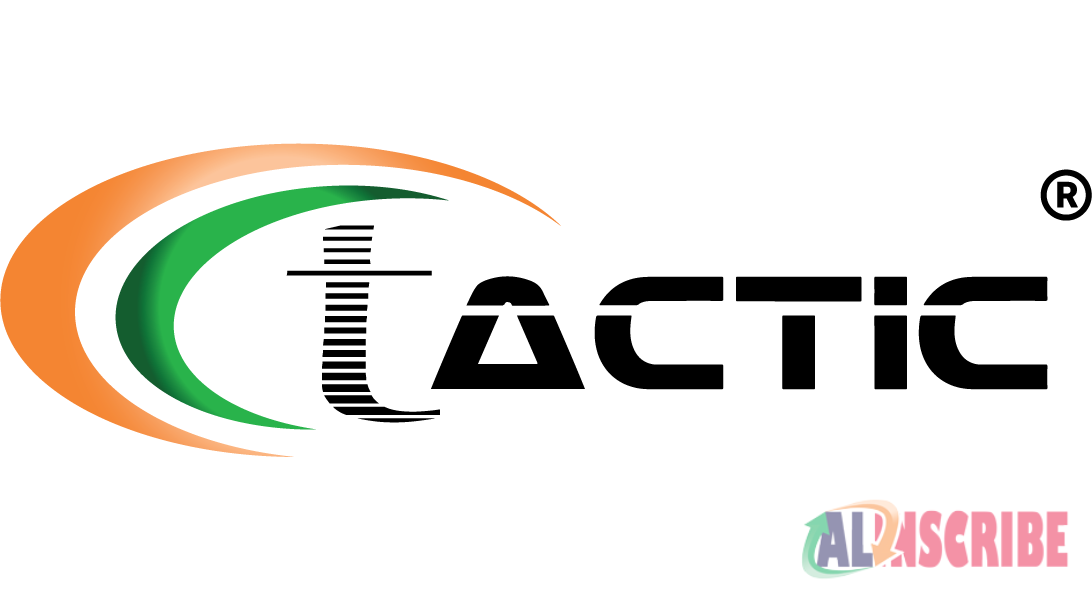
What are the core features of Tactic ERP & CRM?
Tactic ERP & CRM encompasses nearly every essential function required for seamless business operations through its seven core features. However, Tactic's greatest strength lies not just in its comprehensive coverage but in its nature as a highly flexible SaaS solution. This software can be meticulously customized to suit the unique requirements of both small businesses and large corporations. These foundational features unlock access to some of the most sophisticated modules in ERP history, promising a significant enhancement in performance. Let's delve into these core capabilities in detail.
Human Resource Management (HRM)
Human Resource Management stands as the initial core feature. As is widely recognized, HRM is a vital component of any robust ERP system, enabling organizations to digitally administer their workforce. Tactic ERP & CRM acknowledges the necessity of a thorough HRM system and provides extensive, advanced modules for optimal outcomes. The "members" module facilitates the inclusion of both internal and external personnel, meaning permanent employees and outsourced temporary workers can be added, with precise permissions granted as needed. Complementing this are modules for managing leave requests, expense reports, and recruitment, supporting every task a company might associate with HRM. Additionally, features like skills management and time tracking are integral to Tactic ERP & CRM's advanced HRM offering.
Customer Relationship Management (CRM)
Unlike many ERP systems, Tactic boasts integrated CRM functionalities. Furthermore, it offers robust and scalable CRM features designed to support the majority of customer-related tasks within a company. Tactic includes an extensive "third-party" module that operates in three distinct ways: it allows for the addition of prospects, customers, and vendors. Users can also input representatives or contacts from each category to facilitate smoother communication when necessary. Other crucial modules, such as quotations (commercial proposals), interventions, tickets, knowledge management, and partnership management, ensure comprehensive customer relationship management.
Vendor Relationship Management (VRM)
Remarkably, Tactic ERP & CRM extends its capabilities beyond customer management to effectively oversee your vendors. While the vendor relationship management features are somewhat simpler, offering fewer functionalities, they still include essential modules such as the vendor module, vendor commercial proposal module, reception, and Incoterm module. Notably, the Incoterm feature is exceptionally rare across most ERP systems, yet Tactic incorporates it as an integrated, user-friendly module. Thus, Tactic ERP & CRM provides precisely what you need, perhaps even before you realize it.
Financial Management
A standout aspect of Tactic's financial management is its provision for both simplified and double-entry accounting. While only one method can be active at a time, this offers substantial flexibility and choice. The accounting module itself is compact yet comprehensive, encompassing all necessary features like a general ledger, report and invoice binding, journals, and more. Further functionalities include customer invoicing, vendor invoicing, tax management, loans and donations, bank and cash management, margins, and payment processing via debit and credit transfer, thereby saving considerable time and effort that might otherwise be spent on third-party accounting software.
Product Management
The product management features within Tactic ERP & CRM are characterized by their scalability, comprehensiveness, and advanced nature. Tactic supports the management of both products and services. However, its capabilities extend beyond this to include stock modules, complemented by warehouse and inventory management. The warehouse management module facilitates warehouse movements, bulk stock exchanges, replenishment, and similar operations. Additional features include product lots, product variants, bills of material, and manufacturing order modules.
Project Management
Tactic ERP & CRM’s project management features are both straightforward and sophisticated. Projects and leads are effortlessly managed using dedicated modules. Users can assign multiple tasks to a single project, allocate participants, track their time, and manage budgets. Events and agendas can also be easily added and overseen. A calendar view further simplifies the tracking of events and agendas in a consistent manner. Users can also manage their conferences or meetings within the same interface. Furthermore, a dedicated resource module streamlines the addition and tracking of organizational resources.
Electronic Content Management (ECM)
With the electronic content management feature, users can conveniently manage their website content directly within Tactic. This represents one of Tactic ERP & CRM's most distinctive offerings, making content management an accessible task even for individuals without technical expertise.
What are the pros and cons of Tactic ERP & CRM?
| Pros | Cons |
|
|
Microsoft Dynamics 365 vs. Tactic ERP & CRM
| Best Use For | Dynamics 365 | Tactic ERP & CRM |
|---|---|---|
| Business Size | Startups, small, medium and large companies | Startups, small, medium and large companies - size is no bar for Tactic ERP & CRM |
| Business Type | Dynamics 365 is the best for both B2B and B2C companies | Tactic is suitable for both B2B, B2C companies |
| Industries | Manufacturing, Distribution, Retail, Service Industries, Healthcare, Education, Non-profits and Financial Services are the industries that are the most benefited by Dynamics 365. | Tactic is a suitable choice for every industry |
| Core Features | Dynamics 365 | Tactic ERP & CRM |
| Human Resource Management (HRM) | ||
| Customer Relationship Management (CRM) | ||
| Vendor Relationship Management (VRM) | ||
| Financial Modules (Accounting/Treasury) | ||
| Product Management (PM) | ||
| Projects/Collaborative work Management | ||
| Electronic Content Management (ECM) | ||
| HRM Modules | Dynamics 365 | Tactic ERP & CRM |
| User module | ||
| Members Module | ||
| Leave request management Module | ||
| Expense Reports Module | ||
| Recruitment Module | ||
| CRM Modules | Dynamics 365 | Tactic ERP & CRM |
| Third Party module | ||
| Sales Order Module | ||
| Shipment Module | ||
| Contract Module | ||
| Intervention Module | ||
| Tickets Module | ||
| Knowledge management Module | ||
| Partnership management Module | ||
| VRM Modules | Dynamics 365 | Tactic ERP & CRM |
| Vendor Module | ||
| Vendor Commercial Proposal Module | ||
| Reception | ||
| Incoterms Module | ||
| Financial Modules | Dynamics 365 | Tactic ERP & CRM |
| Customer Invoice Module | ||
| Vendor invoice module | ||
| Tax Module | ||
| Salaries Module | ||
| Loans Module | ||
| Donation Module | ||
| Bank and cash module | ||
| Payment by credit transfer Module | ||
| Payments by Direct Debit Module | ||
| Margin Module | ||
| Accounting simplified Module | ||
| Accounting double entry Module | ||
| Product Management (PM) | Dynamics 365 | Tactic ERP & CRM |
| Product Module | ||
| Services Module | ||
| Stocks Module | ||
| Product Lots Module | ||
| Product Variants Module | ||
| Bills of Material Module | ||
| Manufacturing Order Module | ||
| Projects/Collaborative work Management | Dynamics 365 | Tactic ERP & CRM |
| Projects or Leads Module | ||
| Events/Agenda Module | ||
| Resources Module | ||
| Event Organization | ||
| Electronic Content Management (ECM) | Dynamics 365 | Tactic ERP & CRM |
| DMS/ECM Module | ||
| Miscellaneous Modules | Dynamics 365 | Tactic ERP & CRM |
| Tags and Categories Module | ||
| Multicurrency Module | ||
| Bookmarks & Shortcuts Module | ||
| Barcode Module | ||
| Inter-modules Workflow Module | ||
| Data Imports module | ||
| Data Exports Module | ||
| Poll, Survey or Vote Module | ||
| Website Module | ||
| Point Of Sale (TakePOS) | ||
| Social Networks Module | ||
| Notification Module | ||
| Mass Emailing Module | ||
| Email Collector Module | ||
| Web services REST API Module | ||
| Web service SOAP API Module | ||
| LDAP Module | ||
| Oauth Module | ||
| External Site Module | ||
| FTP module | ||
| GeoIPMaxmind Module | ||
| PayBox Module | ||
| Paypal Module | ||
| Stripe Module | ||
| ClickToDial module | ||
| One Click Printing | ||
| Receipt printers Module | ||
| Mailman and SPIP Module | ||
| Scheduled jobs Module | ||
| Specifications | Dynamics 365 | Tactic ERP & CRM |
| Deployment | Dynamics 365 is available to be deployed as both on-premises software and cloud-based software. | Tactic is available as a SaaS and an on-premises software as well. And the best thing about is that the users do not have to opt for different versions of Tactic for that. |
| Supported Device | Any smart device with an internet connection | Any smart device with an internet connection |
| Supported Platforms | Any browser | Tactic can be accessed via any secure browser |
| Support and Training | Dynamics 365 | Tactic ERP & CRM |
| Support | Dynamics 365 offers user support via a dedicated support portal, documentation, knowledge sharing and more. | Tactic offers support through email, call, chat and a remote assistance |
| Training | Dynamics 365 has a blend of structured courses, video tutorials, online learning platforms etc. However, some of these channels may be subject to paid support. | Tactic wiki, tutorial videos, One-on-one training are offered by Tactic |
| Security | Dynamics 365 | Tactic ERP & CRM |
| Security Features | Server Monitoring and Proactive Alerts, Automated Security Patch Management, Role-Based Access Control and Authentication, Backup and Disaster Recovery Management, Data security and regular monitoring | Regular updates, 2FA (2 Factor Authentication), SSL (Encrypted Data Communication between client and server), Backups / Disaster Recovery, Database Security, Password Security, Staff Access, System Security, Physical Security, Credit Card Safety, Data Encryption, Network defense, DOS and Brute force rate Mitigation, Automatic Backups,PHP safe_mode, SQL injection protection, XSS injection protection (cross site scripting), SSRF protection, CSRF (Cross Site Request Forgery) protection, Centralized entry code to check permissions, Optional CAPTCHA in log-in page to restrict robots, Anti-virus check-up sessions on every uploaded file. |
| Framework | Dynamics 365 | Tactic ERP & CRM |
| Programming Language | Dynamics 365 for Finance and Operations uses the X++ programming language, which is an object-oriented language similar to C#. | Tactic ERP & CRM primarily uses PHP |
| Technology | Dynamics 365 | Tactic ERP & CRM |
| Integration with E-commerce Platforms | Dynamics 365 can be easily integrated with your e-commerce website and platform. | Tactic ERP & CRM can be integrated with E-commerce platforms via API very conveniently. |
| Integration with IoT Devices | Dynamics 365 is promotes seamless integration with IoT devices. | Tactic ERP & CRM can be integrated with IoT devices. |
| Artificial Intelligence (AI) and Machine Learning (ML) Capabilities | Dynamics 365 is known to actively integrating and utimizing AI and ML capabilities to enhance performance even more. | Tactic ERP & CRM is looking forward to establish AI/ML within the software in near future. |
| Low-Code/No-Code Development Platform | Dynamics 365 is not a no-code, or low-code platform. | Tactic ERP & CRM doesn't require any kind of programming for minimal changes. The users can easily add, delete any parameters, attributes directly from the setup, which makes it a no-code platform. |
| Sustainability Tracking and Reporting | Available | Not Available |
| Compliance Management Features | Available | A wide range of Compliance Management Features are available in Tactic. |
| Risk Management Features | Financial Risk Management, Supplier Risk Management, Inventory Risk Control, Project Risk Assessment, General Risk Management Features etc. | The users are allowed to take back-up of their software data via admin access. Any other risk management is performed by the parent company. |
| Service Level Agreements (SLAs) for Cloud Offerings | Dynamics 365 offers Service Level Agreements (SLAs) for Cloud Offerings | Tactic ERP & CRM offers Service Level Agreements (SLAs) for Cloud Offerings |
| User Roles and Permissions Management | Dynamics 365 allows the users to add roles and responsibility to limit access | Tactic ERP & CRM allows the users to add roles and responsibility to limit access |
| Search Functionality | Search functionality is available | Search functionality is available |
| Collaboration Tools | Collaboration tools are available | Collaboration tools are available |
| Document Management Integration | Not Available | Document management integration is available. The users can add and manage their document tree within the software very easily |
| Pricing | Dynamics 365 | Tactic ERP & CRM |
| Basic Plan | Dynamics 365 has a very complex pricing structure. It offers different pricing for each of it's module, hence, the pricing depends on the requirements of the users. | $9/Month/User |
| SME Plan | Not Available | $19/Month/User |
| Enterprise Plan | Not Available | $27/Month/User |
| Free Trial | Not Available | Available |
| Freemium Version | Not Available | Available |
Analysis and Conclusion
When analyzing Microsoft Dynamics 365 against Tactic ERP & CRM, it's crucial to consider their distinct strengths and target markets. Both aim to streamline business operations, but they approach this goal with varying levels of complexity, integration, and cost.
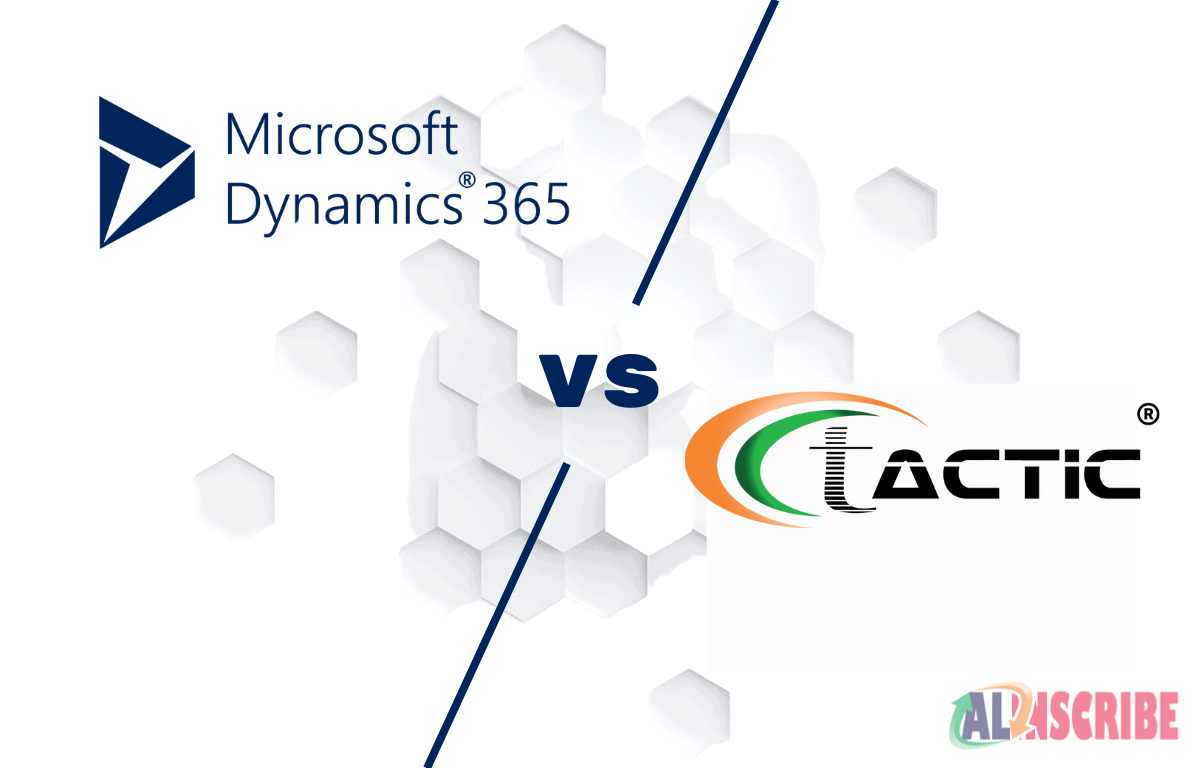
Microsoft Dynamics 365
Positive Points:
- Comprehensive Ecosystem and Integration: Dynamics 365 excels in its deep integration with the broader Microsoft ecosystem, including Office 365, Power Platform (Power BI, Power Apps, Power Automate), and Azure. This allows for seamless data flow, advanced analytics, and the creation of highly customized solutions, leveraging AI and machine learning capabilities from Microsoft's extensive suite.
- Robust Functionality and Scalability for Large Enterprises: It offers a vast array of specialized modules (Finance, Supply Chain, Sales, Marketing, Customer Service, HR, Project Operations) that cater to complex business processes of large enterprises and diverse industries. Its modular nature allows businesses to scale precisely as their needs evolve, adding applications as required.
- Global Reach and Support: Backed by Microsoft, Dynamics 365 provides extensive global support, a large partner network, and robust security features, making it a reliable choice for multinational corporations.
Negative Points:
- High Cost and Complexity of Implementation: Dynamics 365 is notoriously expensive, not just in licensing fees (which are often per-user/per-month and can vary significantly by module), but also in the substantial costs associated with implementation, customization, and ongoing support. Its vastness can lead to complex and lengthy deployment projects.
- Steep Learning Curve and Overwhelming Features: While powerful, the sheer breadth of features and customization options can be overwhelming for new users or smaller organizations. Significant training is often required for employees to fully leverage its capabilities, impacting initial productivity.
Tactic ERP & CRM
Positive Points:
- Integrated ERP & CRM with User-Friendliness: Tactic offers a unified platform that combines ERP and CRM functionalities, reducing data silos and providing a centralized view of operations. Despite its breadth, it is generally praised for its user-friendly interface, making it easier for new users to adopt the system.
- Flexibility and Adaptability for Various Business Sizes: It is highly flexible and can be tailored to fit businesses of different sizes and industries, from startups to larger corporations. This adaptability allows organizations to scale their use of Tactic as they grow, without needing to switch platforms.
- Core Feature Focus and Essential Modules: Tactic covers almost every crucial feature needed for smooth business operations across its core modules like HRM, CRM, Vendor Relationship Management, Financial Management, Product Management, Project Management, and Electronic Content Management, providing a solid foundation for diverse business needs.
Negative Points:
- Occasional Performance Issues and Limited Depth in Niche Areas: Some users report occasional slow performance and lagging within the system, which can impact efficiency. While it covers core features comprehensively, it might lack the granular depth or highly specialized functionalities found in certain modules of more enterprise-grade solutions like Dynamics 365.
Ultimately, for companies operating on a strict budget, Tactic ERP & CRM emerges as the more viable and better option. While Microsoft Dynamics 365 offers unparalleled depth and integration within the expansive Microsoft ecosystem, its significant licensing costs and complex implementation requirements often place it out of reach for smaller businesses or those with limited financial resources. Tactic, on the other hand, delivers a comprehensive, user-friendly, and highly adaptable integrated ERP and CRM solution at a fraction of the cost, making it an excellent choice for startups, small to medium-sized businesses, and freelancing units prioritizing affordability without compromising essential business functionalities.
Article Comments
Similar Articles
Articles Search
Sponsor
There are zero sub-categories in this parent category.
There are zero sub-categories in this parent category.
There are zero sub-categories in this parent category.

